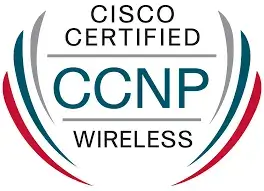Optimizing Network Efficiency with MPLS in CCNP Enterprise

CCNP Enterprise
Welcome to the exciting world of CCNP ENCOR certification, where networking professionals thrive on creating efficient and robust network infrastructures. In this fast-paced digital era, optimizing network efficiency is a top priority for businesses worldwide. One powerful tool that comes to the forefront is Multiprotocol Label Switching (MPLS).
If you’re on your journey towards becoming a certified CCNP Enterprise professional or simply looking to enhance your networking skills, understanding MPLS and its role in network optimization is crucial. In this blog post, we’ll delve into the ins and outs of MPLS within the context of CCNP Enterprise certification. We’ll explore its implementation in different network topologies, troubleshoot common issues that may arise along the way, and share best practices for squeezing every ounce of efficiency out of your networks.
So buckle up as we embark on a thrilling ride through MPLS territory, where seamless connectivity meets enhanced performance!
Understanding CCNP Enterprise and how MPLS fits into the certification
CCNP Enterprise, a sought-after certification in the networking realm, equips professionals with the skills and knowledge to design, implement, and troubleshoot complex enterprise networks. It covers various aspects of network infrastructure, including routing protocols, switching technologies, wireless connectivity, and security.
Within this comprehensive certification framework lies MPLS, a key component that plays a vital role in optimizing network efficiency. MPLS stands for Multiprotocol Label Switching and is designed to simplify data forwarding within networks by using labels instead of traditional IP routing tables.
MPLS fits into the CCNP Enterprise certification by providing networking professionals with an advanced toolset for building scalable and high-performance network infrastructures. With its ability to prioritize traffic flows based on labels assigned to packets, MPLS enables efficient utilization of available bandwidth while ensuring reliable delivery of mission-critical applications.
By understanding how MPLS functions and integrates into larger network architectures like CCNP Enterprise deployments, certified professionals gain valuable insights into leveraging this technology’s full potential. They can effectively deploy MPLS-based solutions such as virtual private networks (VPNs), quality of service (QoS) implementations, traffic engineering (TE), and more.
In addition to its direct benefits in terms of enhanced performance and scalability, familiarity with MPLS opens doors to various job opportunities across industries where companies rely heavily on large-scale networks. As businesses continue their digital transformation journeys towards cloud computing environments or multi-site connectivity requirements, proficiency in implementing and managing MPLS becomes increasingly valuable.
So if you’re aiming to excel in your CCNP Enterprise certification journey or looking for ways to optimize your organization’s network infrastructure, delving deep into the world of MPLS will undoubtedly put you one step ahead!
Implementation of MPLS in different network topologies
MPLS, or Multiprotocol Label Switching, is a versatile technology that can be implemented in various network topologies to enhance efficiency and improve overall performance. Whether you have a small office network or a large enterprise infrastructure, MPLS can provide significant benefits.
In a hub-and-spoke topology, where multiple remote sites are connected to a central headquarters, MPLS allows for efficient routing of traffic between the branches. By establishing virtual private networks (VPNs) over the MPLS backbone, data can be securely transmitted between locations with minimal latency.
For organizations with multiple data centers spread across different geographical regions, implementing MPLS enables seamless communication and workload distribution. With its ability to prioritize traffic based on labels assigned by providers, mission-critical applications can receive guaranteed bandwidth while lower-priority traffic is efficiently routed.
In a full-mesh topology where each site is directly interconnected with every other site, MPLS offers simplified management and reduced complexity compared to traditional routing protocols. It eliminates the need for complex routing tables by utilizing labels instead of IP addresses for forwarding packets.
Implementing MPLS in these diverse network topologies requires careful planning and configuration. Network engineers must ensure proper labeling schemes are established and that Quality of Service (QoS) policies align with business requirements.
Implementing MPLS in different network topologies brings numerous advantages such as improved reliability, scalability, andsecurity,y along with optimized performance and enhanced end-user experience. So whether your organization has a simple branch office setup or operates across multiple continents – exploring the possibilities offered by MPLS could significantly boost your network efficiency!
Common issues and troubleshooting techniques with MPLS
Common issues and troubleshooting techniques with MPLS can be frustrating for network administrators, but understanding these challenges is crucial in maintaining a reliable and efficient network. One common issue that may arise with MPLS is packet loss. This can lead to poor quality of service (QoS) and affect the overall performance of the network.
To troubleshoot packet loss, it is important to identify the root cause. This could be due to congestion on the MPLS link or misconfigured Quality of Service policies. By analyzing traffic patterns and monitoring QoS settings, administrators can pinpoint where the problem lies.
Another issue that may arise with MPLS is latency. High latency can result in slow data transmission and delays in communication between different sites within the network. To address this issue, administrators should check for any potential bottlenecks or congested links along the path.
Additionally, troubleshooting MPLS VPN connectivity issues requires careful examination of routing protocols and configurations at both ends of the connection. Misconfigured routing tables or incorrect addressing schemes can prevent proper communication between sites.
When faced with such problems, it’s essential to use appropriate tools like traceroute or ping to diagnose connectivity issues within an MPLS network. These tools help identify any points of failure along the path from source to destination.
Identifying common issues related to MPLS implementation is vital for maintaining a stable network infrastructure. By employing effective troubleshooting techniques, such as analyzing traffic patterns and using diagnostic tools, administrators can overcome these challenges swiftly and ensure optimal performance across their networks without compromising efficiency!
Best practices for optimizing network efficiency with MPLS
In today’s fast-paced and interconnected world, network efficiency is crucial for businesses to stay competitive. One technology that can greatly enhance network performance is multiprotocol label switching (MPLS). By implementing MPLS in your network infrastructure, you can optimize data routing and improve overall efficiency.
One of the best practices for optimizing network efficiency with MPLS is to carefully plan and design your network topology. This involves determining the locations of MPLS routers and strategically placing them to minimize latency and maximize throughput. Additionally, using redundant links and load-balancing techniques will help distribute traffic evenly across the network and look MPLS questions and answers.
Another important aspect of optimizing network efficiency with MPLS is quality of service (QoS) implementation. By prioritizing certain types of traffic, such as VoIP or video conferencing, you can ensure that critical applications receive sufficient bandwidth while less time-sensitive activities are allocated appropriate resources.
Regular monitoring and maintenance are also essential for optimal MPLS performance. Monitoring tools can provide valuable insights into traffic patterns, congestion points, and potential bottlenecks. With this information at hand, proactive troubleshooting measures can be taken to address issues before they impact user experience.
Furthermore, proper configuration management plays a significant role in maximizing the benefits of MPLS. Keeping accurate records of configurations allows for easier troubleshooting when problems arise or changes need to be made. Regular audits should be conducted to ensure consistency across devices and identify any misconfigurations or vulnerabilities.
Staying up-to-date with industry trends and advancements in MPLS technologies is vital in optimizing network efficiency. New features may become available that could further streamline operations or enhance security within your environment.
By following these best practices for optimizing network efficiency with MPLS, businesses can create a robust infrastructure capable of handling increasing demands while maintaining high levels of performance.
Conclusion
In this blog post, we explored the importance of optimizing network efficiency with MPLS in CCNP Enterprise. We discussed how MPLS fits into the certification and its implementation in different network topologies. Additionally, we delved into common issues that may arise with MPLS and offered troubleshooting techniques to resolve them.
By following best practices for optimizing network efficiency with MPLS, organizations can ensure smooth operations and enhanced performance. These practices include proper configuration of MPLS labels, implementing traffic engineering mechanisms, utilizing Quality of Service (QoS) policies effectively, and monitoring the network regularly.
Remember that a well-optimized MPLS network not only improves connectivity but also enhances overall user experience by providing reliable and efficient data transport. It enables seamless communication between various sites within an organization while prioritizing critical applications over less important ones.
As you continue your journey towards becoming a certified CCNP Enterprise professional, gaining expertise in leveraging MPLS technology will be invaluable for designing resilient networks that meet modern business requirements.
So go ahead, dive deeper into the world of MPLS, and leverage its power to optimize your networks for improved performance and productivity! Read more










